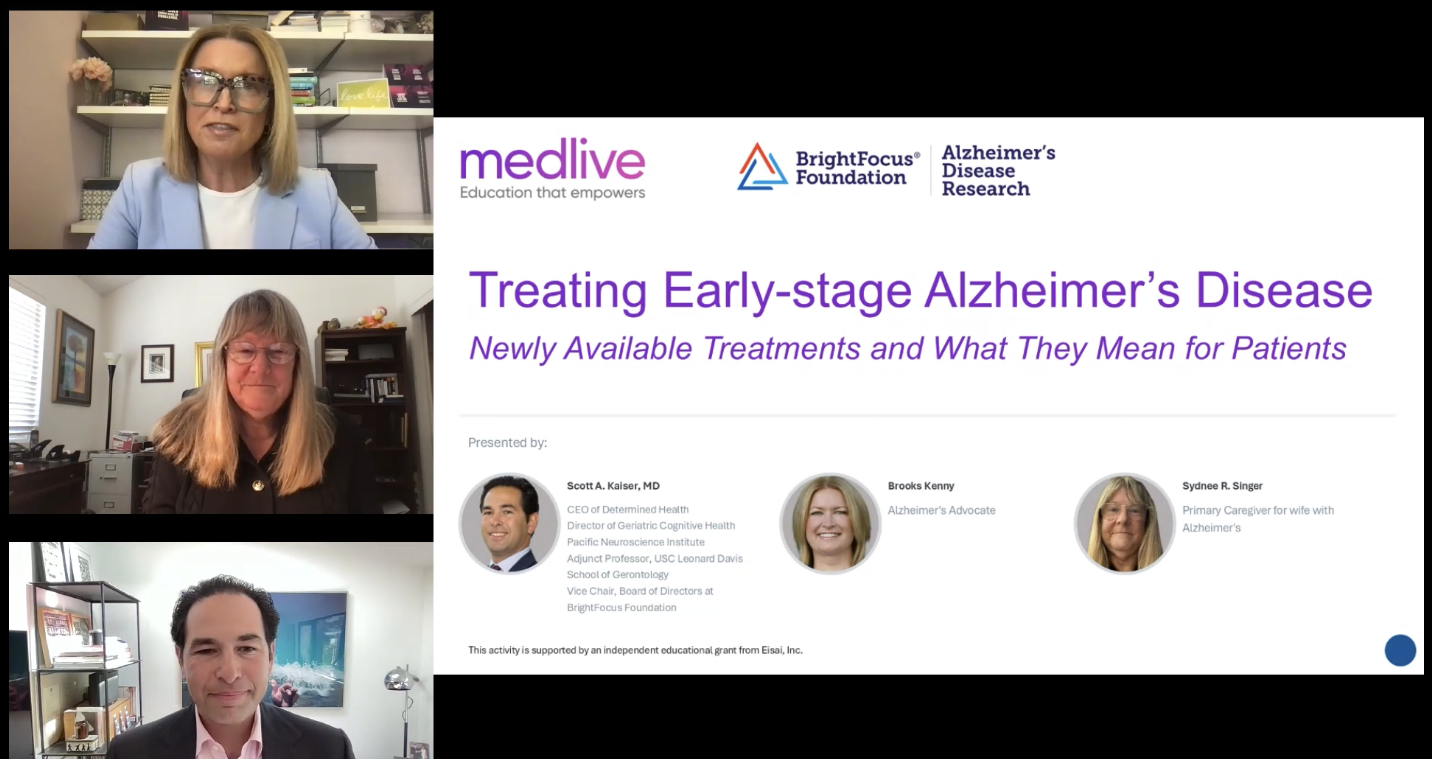
This article explores the latest research concerning Alzheimer’s and women.
Alzheimer’s disease (AD) is, as we often hear, a public health problem of epidemic proportions. It is the fifth leading cause of death in Americans aged 65 and older. The number of affected Americans is already approaching six million. AD will become an even greater societal burden in the future, due to the growth of our population both in number and in expected length of life. While AD is a major source of suffering, death, expense, and caregiving burden for all of us, it has an especially powerful impact on the lives of women.
The Age Factor
Many more women than men suffer from AD. A recent study reported that 3.4 million women age 65 and older, compared to 1.8 million men, are affected in the United States.1 Since the most powerful risk factor for Alzheimer’s disease is age, many researchers believe that women’s greater life expectancy explains why so many more women are affected. According to the latest census, Americans of both sexes now expect to survive into their early 80s, but women will live, on average, nearly three years longer than men.2Researchers confirmed the importance of women’s longer survival as a risk factor for AD by following a large group of aging East Boston adults. They showed that the lifetime risk for AD among the women in this group was 32%, while the lifetime risk for men was only 18%.3
Male/Female Differences
Women’s lives and bodies differ from men’s in a variety of ways that might affect the course and expression of Alzheimer’s disease. Some studies have focused on socioeconomic factors including educational level, lifestyle, and the different stresses that affect women as compared to men. In addition, a very important body of research has explored the effects on AD of hormonal differences between men and women. Early research findings in animals indicated that estrogen has multiple beneficial effects on the brain including:
- Improved synapse formation: the synapse is a structure that permits cells to communicate with one another.
- Increased cerebral blood flow and glucose metabolism
- Increased choline acetyltransferase activity: this enzyme helps in the formation of acetylcholine, an important brain chemical involved in nerve cell communication.
- Reduced deposition of toxic beta-amyloid: one of the hallmarks of Alzheimer’s disease is the accumulation of beta-amyloid plaques between nerve cells in the brain.
- Prevention of mitochondrial damage: mitochondria are the cell’s power plants, and also perform other important functions.
In women started on estrogen therapy in early post-menopause, estrogen therapy was shown to have cognitive benefits. The famous Women’s Health Initiative Study, however, reported an increased risk for dementia among women who began estrogen or estrogen with progesterone at ages 65 to 79 years. This finding alarmed many patients and clinicians and led to a decrease in the prescribing of Hormone Replacement Therapy (HRT). Subsequent reconsideration of the many sources of data on HRT, however, has suggested an explanatory “window effect” or “timing effect” theory. This theory proposes that estrogen begun in early post-menopause has beneficial effects on the brain, but that estrogen’s potential benefits in older women are outweighed by detrimental effects including enhanced clotting and inflammation.4
Surprisingly, some research suggests that not only the number of affected people, but also the character of the disease is affected by gender. Men with AD have been found more likely to show aggressiveness,5-6 preoccupation with bodily function, and apathy.6 Women, by contrast, have been found to show more reclusive behavior, emotional lability, hoarding, and refusal of help.6
The Impact of Caregiving
Finally, a discussion of AD’s effects on women must acknowledge women’s disproportionately large caregiving role. Women account for three out of every five AD caregivers. This means that about 6.7 million women in America provide unpaid care for someone with dementia.7The impact on these caregivers’ lives is extraordinarily stressful. An NAC/AARP poll taken in 2010 showed that nearly half the caregivers who responded considered the stress of caregiving to be maximal.8 Many employed caregivers are forced to take a leave of absence from a paid job or to give up a job altogether as a result of caregiving demands. The majority of caregivers report having less time for their friends and families.
Although there may be positive aspects of caregiving, women who take on this role often have done so as a result of their promise to keep a relative or friend out of an institution, or to avoid the prohibitively expensive costs associated with other options, such as paid care at home or in an Assisted Living dementia unit. Dementia care, compared to caregiving for other illnesses or disabilities, is a particularly demanding form of caregiving. Female dementia caregivers, according to an NAC/AARP study, provided an average of 24 hours of care per week, significantly more hours than other types of caregivers. More than half the dementia caregivers reported that they must maintain vigilance 24 hours per day. Several model programs have focused on the needs of caregivers, addressing such critical matters as self-care, relief of depression, and coping with behavioral symptoms associated with dementia.9
Summary
The future may hold significant advances for the prevention and treatment of AD. There has been progress in early detection, lifestyle modification, somatic therapies, and psychosocial treatments. However, the special needs of women are among the important questions that demand additional attention. Further investigation is clearly needed in a number of areas, including the effects of HRT on brain health, biological biomarkers, genetic risk factors, and better detection of those at risk for AD, to mention a few. Also, to improve the lives of women affected by AD, it will be crucial to have greater support for caregivers, to develop improved options for home care and for the financing of care.
About BrightFocus Foundation
BrightFocus Foundation is a premier global nonprofit funder of research to defeat Alzheimer’s, macular degeneration, and glaucoma. Through its flagship research programs — Alzheimer’s Disease Research, Macular Degeneration Research, and National Glaucoma Research— the Foundation has awarded nearly $300 million in groundbreaking research funding over the past 51 years and shares the latest research findings, expert information, and resources to empower the millions impacted by these devastating diseases. Learn more at brightfocus.org.
Disclaimer: The information provided here is a public service of BrightFocus Foundation and is not intended to constitute medical advice. Please consult your physician for personalized medical, dietary, and/or exercise advice. Any medications or supplements should only be taken under medical supervision. BrightFocus Foundation does not endorse any medical products or therapies.










